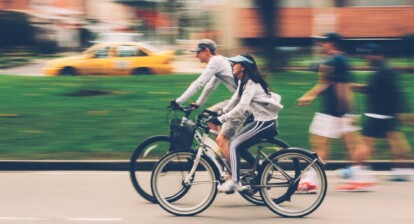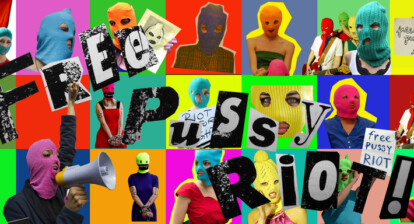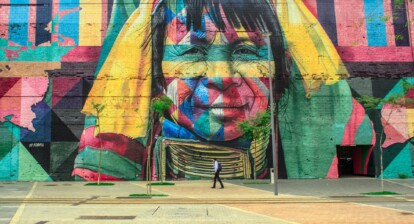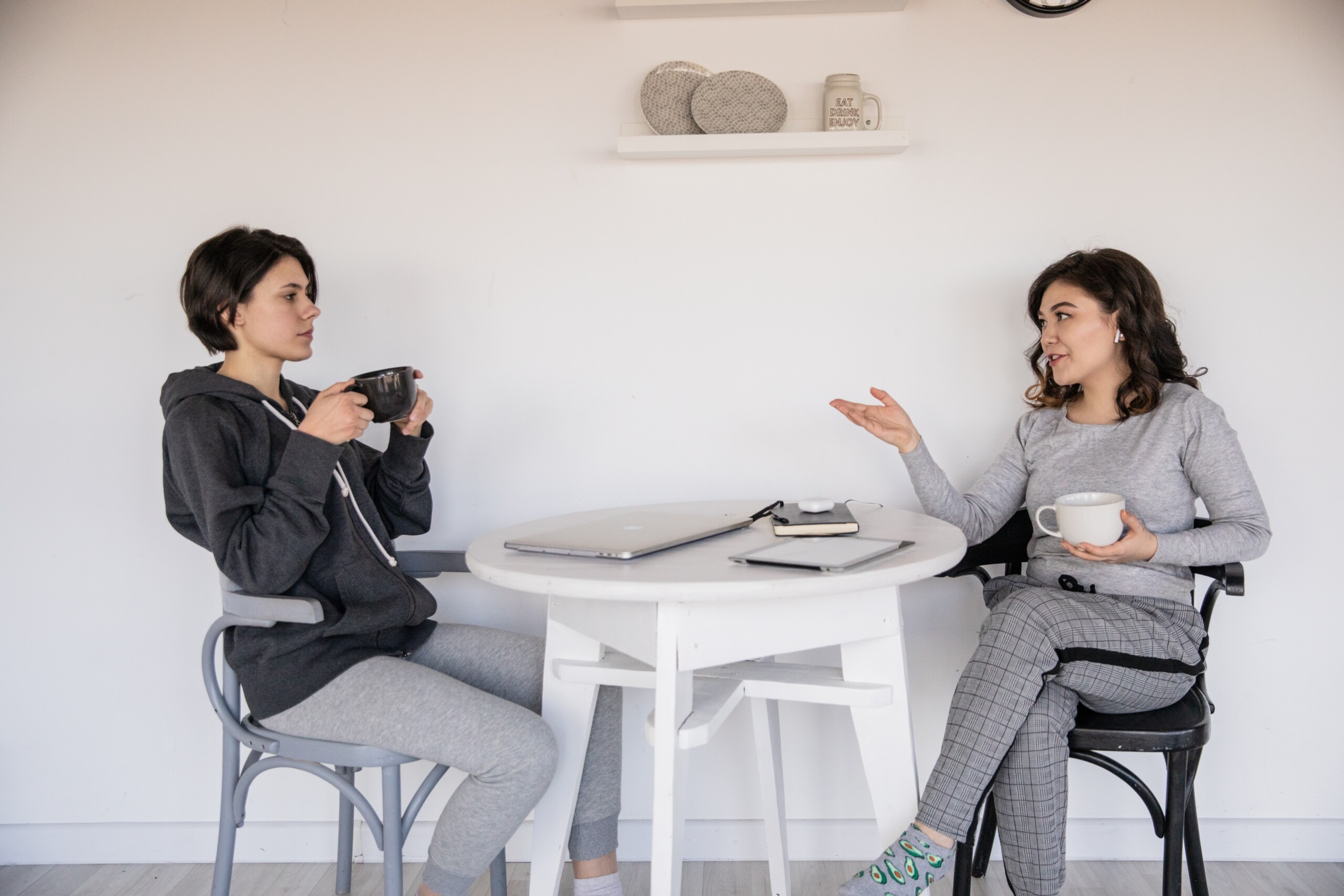In the South of Tilburg city center lies the Uitvindersbuurt. Even though the name might suggest an inventive area (“Inventors neighborhood”) when you observe the place it does not seem as if there has been so much creative thought regarding the improvement of the neighborhood in the last couple of years. The neighborhood is characterized by inequalities, varying in terms of age groups, socioeconomic statuses, forms of households, and cultural backgrounds. Multiple walking visits by us to the Uitvindersbuurt demonstrated similar findings. The houses have different architecture and vary in the sense of welcoming. The houses are either just renovated and new (gentrified) or neglected enough to be considered old. Sometimes this contrast was directly visible. The neglected areas of the neighborhood could indicate a low socioeconomic status (SES). It can also be noted that some streets all have their curtains closed, both in the morning and during the day, even when cars are in front of the house, which could imply that the residents are in their homes. Some of these houses even have cameras placed next to their doors.
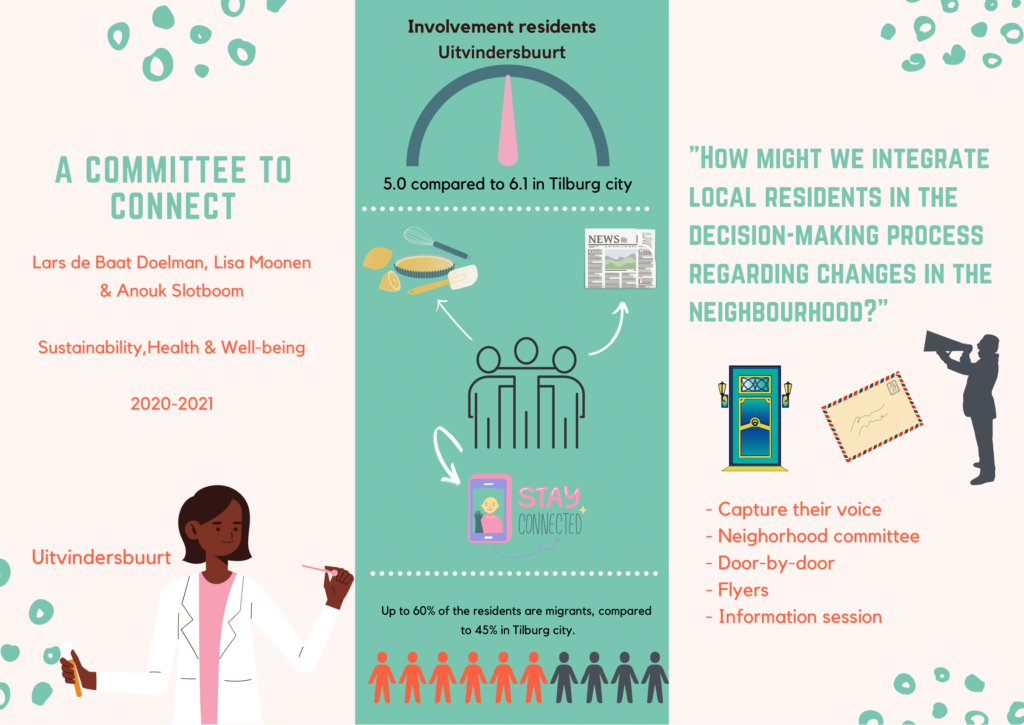
Nevertheless, there is one thing that these people have in common: living in a neighborhood that shows the lowest number of involved residents from all the neighbourhoods in Tilburg. The involvement of the residents of Tilburg, which was measured on a scale varying from 1 to 10, has an average of 6.1. However, the Uitvindersbuurt has a score of 5.0 on the involvement of the residents. Another quite concerning number is that from 2017 to 2019, the involvement of residents did not change (it stayed at 5.0). How is that possible for a neighborhood whose name suggests invention and development?
One reason for this might be that the percentage of migrants living in the Uitvindersbuurt is 57%, compared to an average percentage of 45% in Tilburg as a whole [1]. Literature shows that individuals are less likely to connect socially in heterogeneous communities compared to homogeneous communities [2]. This can be explained through the homophily principle: people prefer to interact with other residents who have the same social status, share the same ethnic heritage, and hence share experiences and tastes.
Observations that corresponded to the percentage of migrants (57%) living in Uitvindersbuurt vary. For example, the Polish supermarket indicates Polish people living in the area [3]. Giddens structuration theory is connected to this observation, as the specific structure of the neighborhood (which in this case is Polish migrants) opens the opportunity for a Polish supermarket to establish in the Uitvindersbuurt. This also goes the other way of course, as without the Polish migrants living in this area a Polish supermarket wouldn’t be profitable. Residents talking to each other in a foreign language might similarly suggest a migration background. A kind of counterintuitive observation was that the language of signs indicating norms and rules around the playgrounds were only in Dutch, and not translated to English. The high percentage of migrants could be linked back to the low levels of engagements, as these people might not be able to speak each other’s (or the Dutch) language. It could also be that due to the large number of cultural differences people might not be so prone to connect.
However, observation of the involvement of residents posed quite a contrast to what these figures suggest. We observed and perceived that some residents actually are involved. Signs that confirm this are the amounts of teddy bears that can be found in front of the windows of residents. This is part of the ‘’bear hunt’’, which is meant to give kids something to do in these times of COVID-19. Another contrasting observation was people sitting in their front yard, greeting other locals as they walked by. There is also a warm and loving note on somebody’s window which shows that at least somebody is willing to help others.
Therefore, this place can be considered as a community searching for a sense of itself, and a sense of belonging. But how can this goal be fulfilled?
The intervention
The intervention we propose is aimed at founding a neighborhood committee [4]. As commonly thought, individuals tend to be more creative when they work in groups. This is the core idea behind our intervention. By grouping people from the neighborhood, we hope to capture different backgrounds, personalities, sexes, and therefore different ideas to improve the involvement of residents within the neighborhood.
The people in the neighborhood committee will represent the voice of the neighborhood and stand in frequent contact with the municipality. Creative ideas for new concepts or feedback received from the residents can then be communicated to the municipality. It is important that all the residents of the neighborhood will be represented in the neighborhood committee. Therefore, the committee will be composed of people from different socioeconomic statuses (SES), cultural backgrounds, sex, and ages.
Using a fishbowl as a metaphor, people live in their own bowl and are barely in contact with people (or fish) from another bowl. For example, the many migrants in Uitvindersbuurt (57%), with their many cultural differences, can be depicted as different fish. The goal of this project is to capture people from all different bowls.
But how would this intervention increase the involvement of the residents in the neighborhood?
We feel that a neighborhood committee, when implemented correctly, acts as the backbone for the success of all other interventions within a neighborhood. A neighborhood committee is knowledgeable about the sense of community needs, acts as a broker between neighborhood and municipality, and at the same time brings people with (cultural) differences together [5]. A neighborhood committee leads to an increment of levels of neighborhood involvement, as residents have more say in what issues should be addressed and tackled. This leads to more relevant, creative, and effective responses to neighborhood-specific issues. For example, residents will feel better understood, as they can raise these specific issues more informally.
Therefore, we think that a neighborhood committee can thrive and act as a tool to move forward towards better outcomes in terms of involvement, cohesion, and participation in a neighborhood.
Referenties
[1] Alesina, A., & La Ferrara, E. (2002). Who trusts others. Journal of Public Economics, 85(2), 207–234.
[2] Tolsma, J., Meer, van der, T., & Gesthuizen, M. (2009). The impact of neighbourhood and municipality characteristics on social cohesion in the Netherlands. Acta politica, 44(3), 286-313.
[3] Bernard, P., Charafeddine, R., Frohlich, K. L., Daniel, M., Kestens, Y., & Potvin, L. (2007). Health inequalities and place: a theoretical conception of neighbourhood. Social science & medicine, 65(9), 1839-1852.
[4] Paulus, P.B., Brown, V.R. (2007). Toward more creative and innovative group idea generation: a cognitive-social motivational perspective of brainstorming. Social and personality compass, 1(1), 258-265.
[5] Robinson, F., Shaw, K., & Davidson, G. (2005). ‘On the side of the angels’: community involvement in the governance of neighbourhood renewal. Local economy, 20(1), 13-26.


